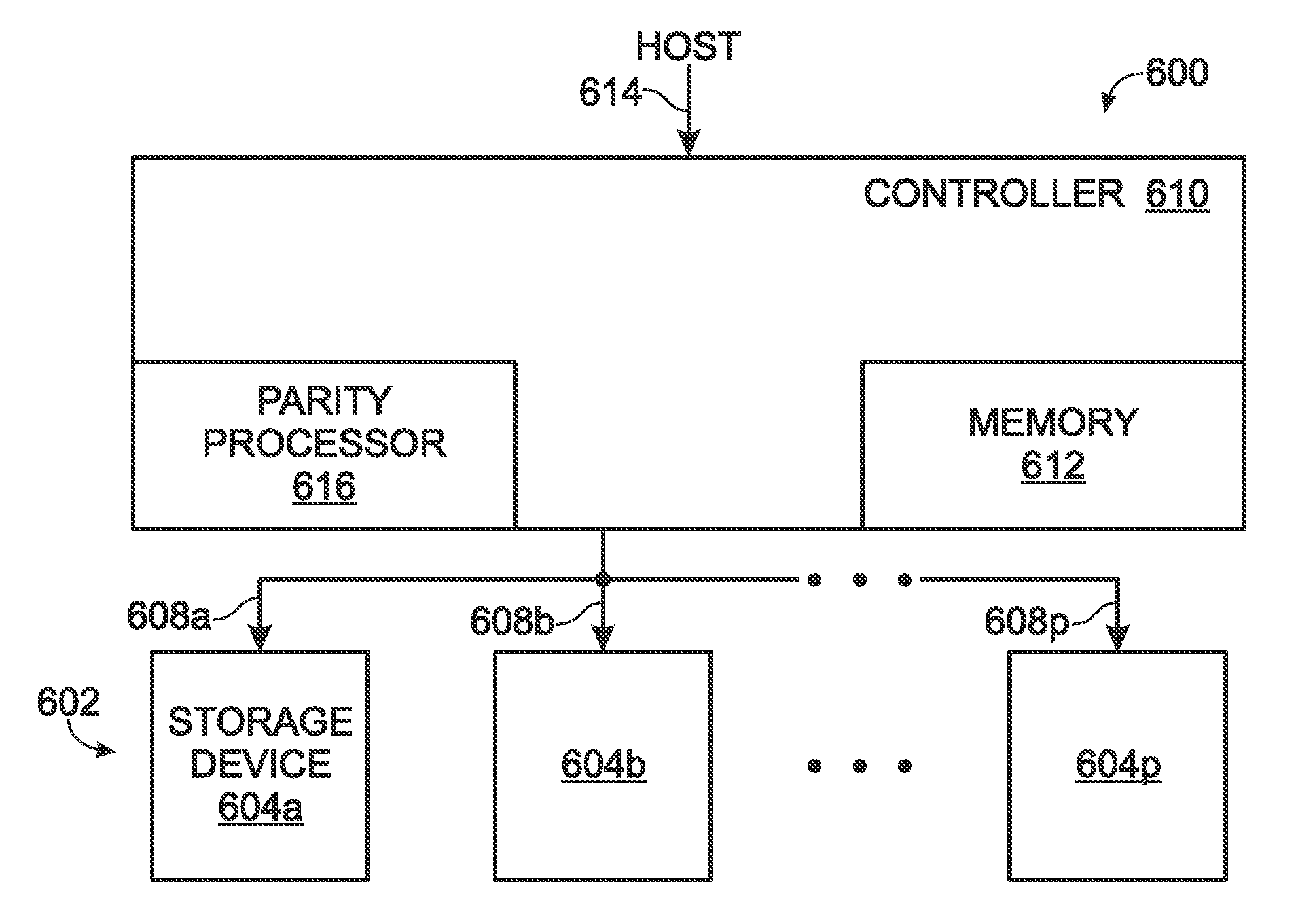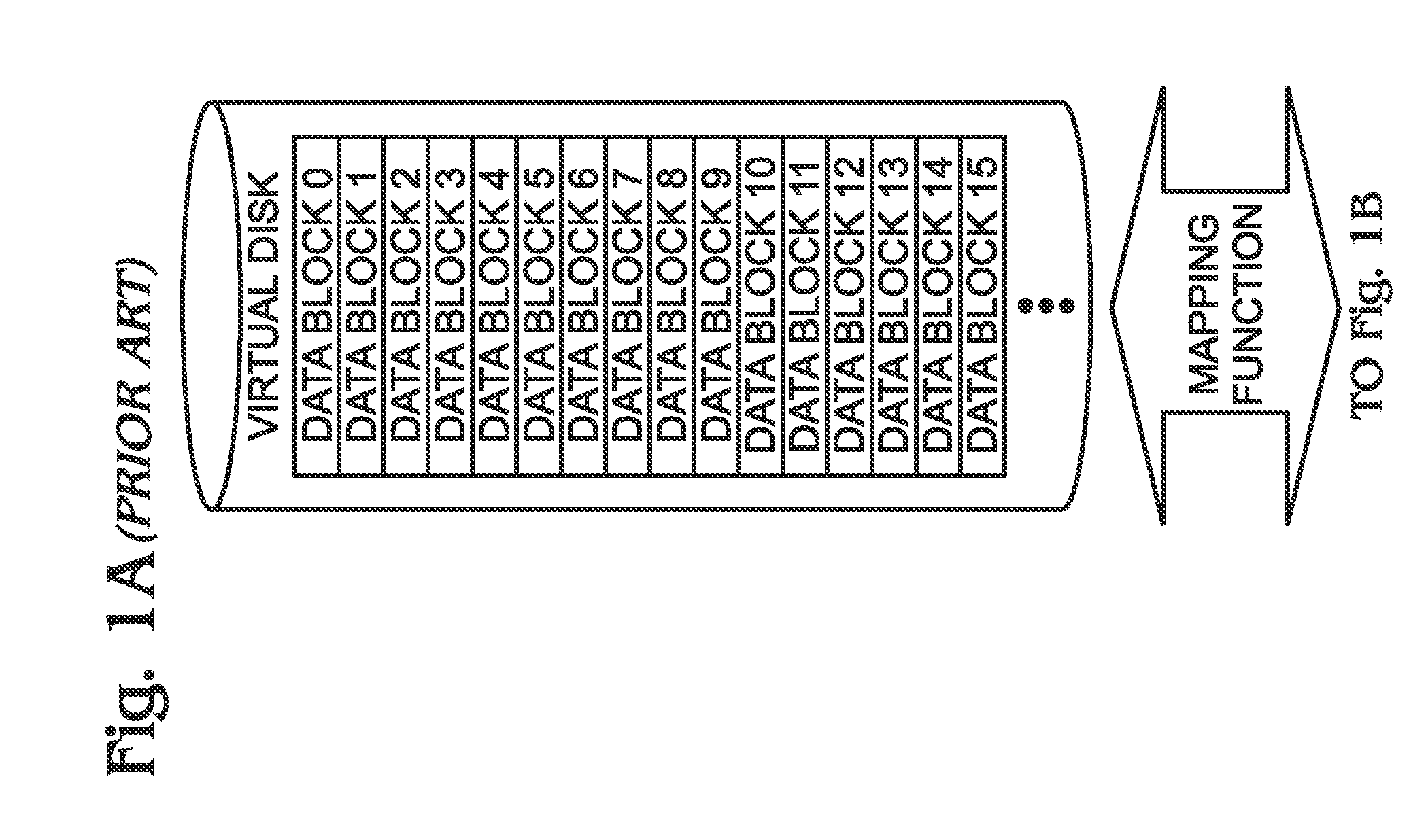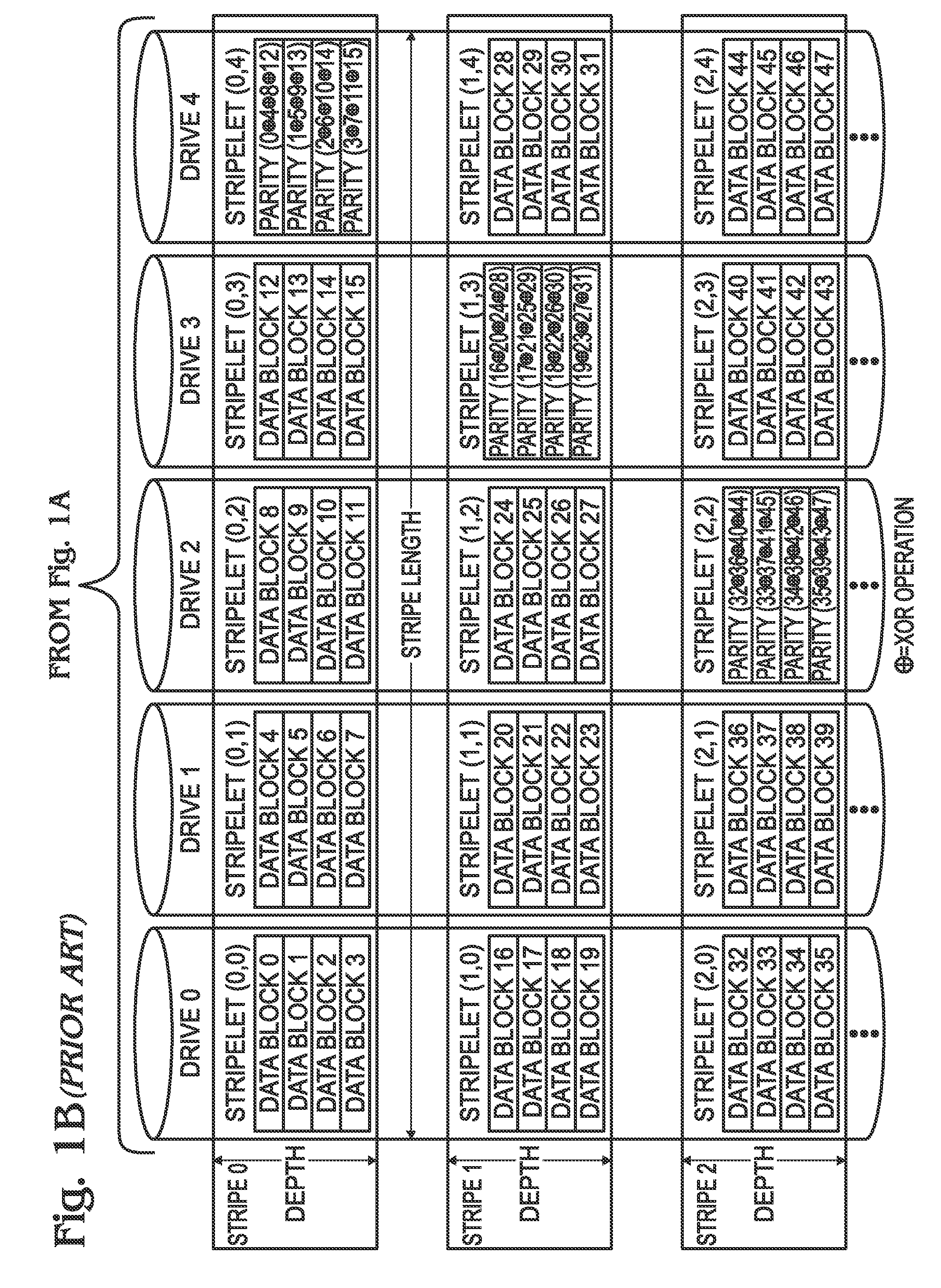Automated Full Stripe Operations in a Redundant Array of Disk Drives
- Summary
- Abstract
- Description
- Claims
- Application Information
AI Technical Summary
Benefits of technology
Problems solved by technology
Method used
Image
Examples
Embodiment Construction
[0030]FIG. 6 is a schematic block diagram depicting a system for automating full stripe operations in a redundant data storage array. The system 600 comprises an array 602 of redundant data storage devices 604a though 604p, where p is not limited to any particular value. Each device 604a-604p has a controller interface for reading and writing data on lines 608a through608p, respectively. A controller 610 is shown with a memory 612 and a storage device interface on line 608. The controller 610 accumulates a parity product associated with an information stripe of data, and stores the parity product in the memory 612 in a single write operation, subsequent to accumulating the parity product. Then, the stored parity product can be written into a storage device 604. In one aspect, the array 602 of redundant data storage devices is a redundant array of disk drives (RAID). Then, the controller 610 is a RAID controller with an embedded controller memory 612 and a RAID interface.
[0031]The RA...
PUM
 Login to View More
Login to View More Abstract
Description
Claims
Application Information
 Login to View More
Login to View More - R&D
- Intellectual Property
- Life Sciences
- Materials
- Tech Scout
- Unparalleled Data Quality
- Higher Quality Content
- 60% Fewer Hallucinations
Browse by: Latest US Patents, China's latest patents, Technical Efficacy Thesaurus, Application Domain, Technology Topic, Popular Technical Reports.
© 2025 PatSnap. All rights reserved.Legal|Privacy policy|Modern Slavery Act Transparency Statement|Sitemap|About US| Contact US: help@patsnap.com



